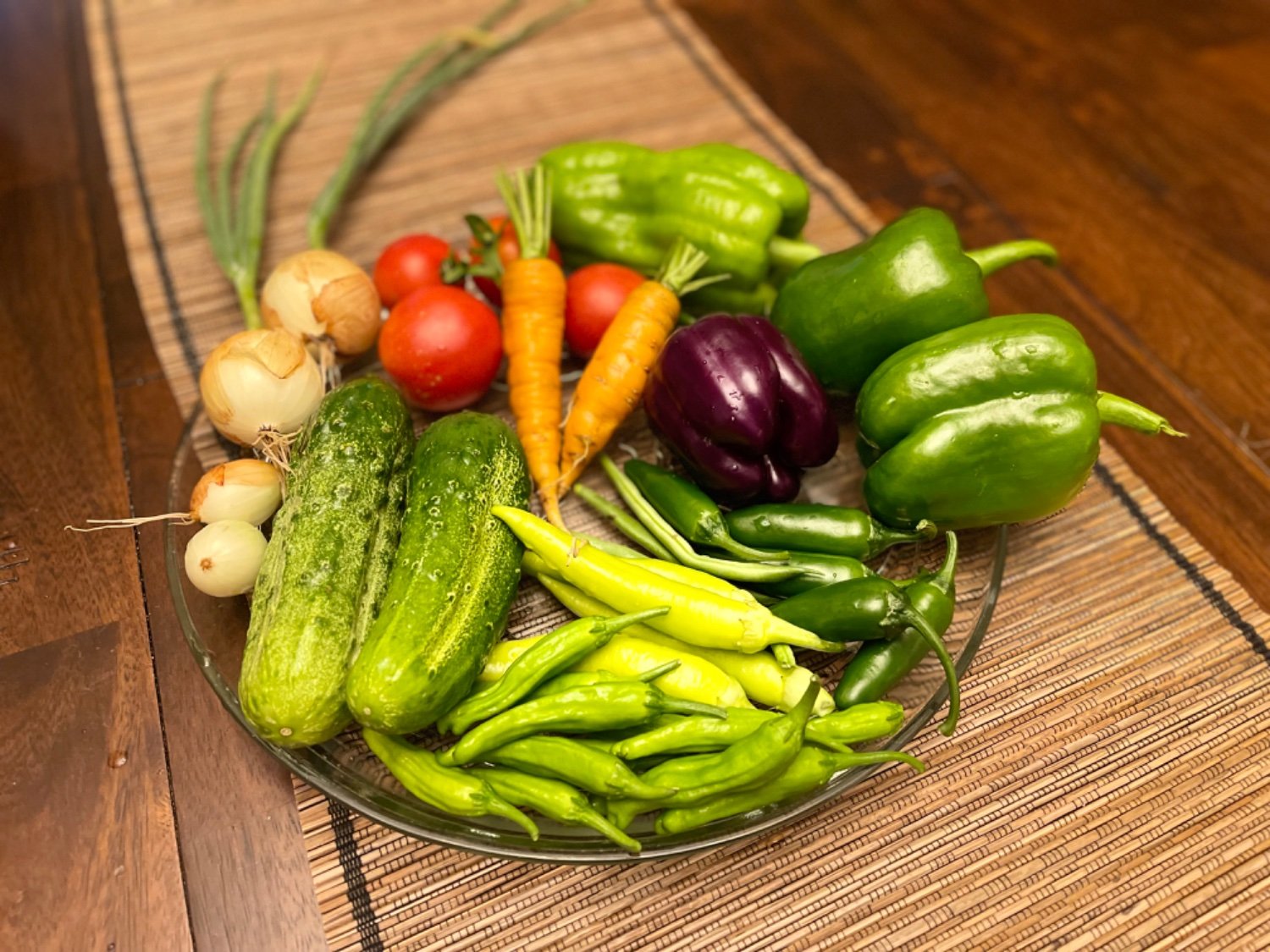With how heavily subsidised corn is in the US it would an achievement to fail at turning a profit.
AG 101 “How to lose money on corn”
-
Rent more land than you own.
-
Buy the cheapest seed you can find to “save money”
-
Grow the corn non-irrigated
-
Use custom operators to fertilize, plant, spray, and harvest but minimize what you put down to “save money”.
-
Gamble the entire year on the commodities market selling your crop.
Even with subsidies this is a recipe for losing money. These “farmers” tend to consistently lose money until they eventually go under after all the equity in the land they own is gone.
It’s so common that entire generations have grown corn at a loss. Why, entire states built their economies on the losses they found from corn. It’s such an unprofitable crop that only half of the United States grows it, and it’s a pretty poor country.
You are looking at survivorship bias. Look at the number of farms statistics. It’s been steadily declining for a very long time. Every year thousands of farms go bankrupt or sell out mostly following the above steps. Because of the large amount of equity in the land value and the relatively small net return or loss it takes a long time for them to go bankrupt. On average around 15-20 years of poor management.
Now the ones that survive follow AG 102 “How to make money growing corn.”
-
Own the land outright without any mortgage.
-
Do research plots to evaluate corn varieties and purchase the seed with the highest potential net return. Do not be loyal to any brand/supplier.
-
Invest in irrigation, even in areas that usually get enough rainfall. Running a pivot 1-2 times at the right time can equal 100+ bu higher yield.
-
Purchase and maintain your own equipment. Replace equipment on the good years, repair it on the bad one.
-
Open bid on your inputs. Offer no loyalty to any one supplier, do your own application when possible. Buy generics and cheaper equivalent inputs when possible.
-
Manage your risk when selling. Contract the bulk of your sales early to guarantee a return ad cover your costs.
-
Do not get on the debt cycle of paying for inputs by taking short term loans. Maintain a healthy reserve from good years to cover the bad ones
-
My dude, what lemmies are you subbed to? I want to discuss these things somewhere, can’t find anything reasonable.
I keep hearing this, but someone has to be making money on corn or there wouldn’t be corn. My guess is that the margin is so thin that the only way to put any appreciable amount of money away to get you through a market dip is to do tremendous volume, which would cause the industry to tend to push out small farmers, which kicks off a feedback loop because the big conglomerates are even bigger and can take even longer bad times, so they can snap up even more failed small farmers, etc etc ad nauseaum.
-
…I should start growing corn
First you need a lot of land and some heavy farm equipment. Then a contract with Monsanto…
You can grow corn without Roundup. You can even sell it for more money as “organic corn”.
Not immediately, though. To make the conversion, a farmer must grow organic corn but without the premium price for seven years. All the while, thorough documentation & being open to inspection.
After 7 years, you can grow organic corn…and get the premium prices associated with growing organic corn.
It’s a 3 year conversion in the U.S… The easiest way to convert it is to plant alfalfa. Then when it comes out of hay it’s certified organic.
Idk about your alfalfa/hay situation, but IIRC for corn it is 7 whole years. This is so virtually all of the inorganic pesticides, insecticides, fertilizers, and all the other “stuff” that isn’t organic works its way out of the soil. We just had a local farmer become organic certified for corn a couple years ago; it was a big deal.
Personally I think in the interim, a farmer could sell his “not quite organic certified” corn crop to a local cattle producer for feed. 😏 Charge more than GMO corn, but not as much as organic. Everybody wins, everybody’s happy. There is a base practical reason for this: at least cows prefer organic & non-GMO corn. It tastes better to them, hell, it’s probably marginally better for them. They happily eat more, which fattens them up, making for a better end product beef.
Before you can use land to raise organic products, you must stop applying inputs like fertilizers and pesticides that are prohibited in organic production and handling.
To complete your transition to organic, your farm or ranch cannot have used any of these substances in the last three years.
https://www.ams.usda.gov/services/organic-certification/transitioning-to-organic
Doesn’t matter what crop it is. Organic certification is 3 years.
… cows prefer organic & non-GMO corn. It tastes better to them …
Wild! Per opinions of farmers you’ve heard?
Guys, your standards are too low. Your situation with environmentally damaging and ecological is the same as ours with ecological and biological.
There’s just a little bit of fraud in the organic market.
I mean one guy fraudulently sold 7% of the corn and 8% of soybeans. I am sure nobody else is doing the same.
I think they’re more talking about seed supply than herbicides. But it’s usually a combo deal depending on what you’re doing.
You can sell organic for about 5-10% more, but your yield is typically 15-20% less than non organic, and it’s more labour intensive.
Organic growing is really a niche subsector of agriculture which doesn’t really thrive at a larger scale, but it’s a decent option for people with smaller plots of land.
I think they’re more talking about seed supply than herbicides.
Right, but you don’t need a contract with Monsanto to get seeds if you’re not going to use chemicals. Monsanto holds the patent for Roundup resistant plants, which is why they can completely control all of the seeds. If you’re not using chemicals or that GMO variant, then you don’t need Monsanto at all.
Monsanto holds the patent for Roundup resistant plants, which is why they can completely control all of the seeds. If you’re not using chemicals or that GMO variant, then you don’t need Monsanto at all.
They sell a lot more than just their round up ready seeds, they also have a lot of GMO for things like drought tolerance and some that can release a pesticide like protein. They also own/supply a lot of the organic/heirloom subsidiaries that people believe to be competition.
It’s actually pretty hard to avoid using a product from Monsanto, there’s actually websites that have list you can cross reference to avoid it if possible.
Monsanto doesn’t exist anymore. It was purchased by Bayer in an all cash deal
Bayer of course is worse
TIL. Thanks for sharing
We use it for basically everything from food and beverage sweetener to car fuel.
also it goes in butts sometimes.
Way too much of it in food.
Maybe he got the subsidies too.
While I don’t doubt that statement, this location in Interstellar was filmed in Alberta, Canada.
If anyone thinks farming is for simpletons, come fucking try it. Bring your tickets in heavy duty mechanics, welding, fitting, instrumentation, and millwrighting. An accounting degree with minors in veterinary science, commerce, soil biology, animal science and mychorrizhal studies will be an asset. Also, you’re going to need a CDL and the ability to operate about 30 types of heavy equipment without dying because there aren’t a lot of safeties on anything. If you’re slow, you’re dead.
Now take all that and add a credit score sufficient to borrow about $2 million for operating line, inputs, salaries, land rent, equipment maintenance and leasing and custom work. Then come talk to me about talents.
On the accounting, I’ve done taxes for a few cattle ranches. They do their bookkeeping with literal pencil and paper. The handwriting can be difficult to read, but lemme tell ya, they are always accurate to the penny and absolutely no nonsense. Far better than most of the urban small businesses out there.
Well, I end up at year-end balancing all the forward grain contracts and put/call options against actual sales, with dockage and off-cheque charges for the various commissions, and have to figure out crop insurance receipts and outlays against their audit and my sales. Then you need to reconcile the cattle sales at auction with all the shrinkage, auction fees and cattle commission charges. Because chem gets ordered but not all is used, I’ll often have to build a ledger showing where the refunds come from, and that will set off a cascade of reversals for various incentive programs and grant money we get to reduce nitrogen usage that all have to be explained. Don’t even get me started on the various environmental grant programs we are a part of in order to try to build a sustainable land base.
I’ve tried to just let this stuff go straight to the accountant, and it was an utter shitshow, and these accountants have worked with farms in our area and size for decades. And I completely understand, because I deal with these things all year and I still end up scratching my head how a lot of these companies build statements, and catch them in errors just because I’m so used to dealing with this stuff.
deleted by creator
Check out “Clarksons Farm”. I’ve only watched the first few episodes but it’s a comical look at “real” farm life (that is, the less glamorous side…but it’s still reality TV).
The “Clarkson” is Jeremy Clarkson. From Top Gear. He bought a farm. And has absolutely no idea what to do with it. But he hired a couple seasoned farmers who know the area exceptionally well to help him out.
I tried growing a bed of veggies during the pandemic and miserably failed lol. I’m someone who has been growing 100+ houseplants for years so I’m not a novice.
I have deep respect for farmers, not just because of the talent and hard work but also because of the courage it takes to do it (like your life can be ruined if there isn’t enough rain one year).
I have been growing beds of veggies for years and I don’t have a fucking PhD in whatever the fuck dude said above. Large scale farming is a whole lot different than a backyard garden. Behold the fruits of my labors as a simpleton

like your life can be ruined if there isn’t enough rain one year
Part of the calculation and you have some buffer crops. At least here. Are still a lot of US farms monoculture?
Are still a lot of US farms monoculture?
Of course not! They uh… Plant several varieties of corn! :p
And this is the argument I give people who complain that we give farmers subsidizes…food is cheap and plentiful for a reason.
Yep. And throwing away food isn’t totally a bad thing (though they could do better things with it, ultimately giving it away has rippling effects in the economy of food, the portion of people willing to hold out for less-fresh free food increases, lowering the demand for fresh food and thus raising its price).
The point is, it’s far better to have a surplus of food than a deficit, or even “just enough”. You don’t want a well-placed cold-snap, a drought, wildfires, fungus, insects, bird flu, barges stuck in a canal, or who knows what else happens in a grow season to be the difference between most the country being “fed” or “not fed”.
We don’t even really toss out much of the food we grow, it gets turned into grain for cattle 99% of the time. Stalks/roots of the plants get turned into feed for pigs/cows. Our system while it could be better is still very efficient.
Most of the food we grow goes to cattle (and other livestock. Mostly cattle tho). They consume far more than humans.
No we do not. 85+% of the grain/food they eat is leftovers from what we grow to eat. They eat what you cannot. Stems/stalks/roots. They also drink non-potable water.
There is a reason a 50lb bag of sweet feed is $10 and drops to around $6 for bulk purchase.
Calling it leftovers is being a bit generous. It’s not waste. If there was food that was being eaten, then that means there’s not a surplus. There’s absolutely a surplus.
The best stuff goes to the humans, the bruised blemished and discolored stuff goes to the animals who are indifferent. If they weren’t eating the food, there would be less food grown.
80% of all commercial soy goes to livestock, and we are clear cutting the Amazon to grow it.
Something like 70% of the alfalfa grown in California is for dairy cows.
People like to ridicule the lowly almond for how much water it consumes to make milk…it still takes significantly less water to make a gallon of almond milk than it does to make a gallon of dairy milk. And almonds are one of the most inefficient non-dairy milks (lots of water and little significant nutritional value, compared to soy which takes less water and gives significantly more bioavailable protein and aminos). The big reason why people complain about the almonds is because it’s grown in dryer parts of California…but almost all the alfalfa grown is done in the literal desert, and most of that is exported.
Nope and nope. A massive portion of that alfalfa is shipped overseas (it needs to stop). And no we do not grow crops just to feed cattle.
https://www.sacredcow.info/blog/qz6pi6cvjowjhxsh4dqg1dogiznou6?format=amp
The Mitchell and Webb Situation send their regards:
Didn’t even need to click the link.
“Eggs! Out of their f**ing bums!”
I quote this all the time to my gf. I sleep on the couch now.
That seems unlikely. It would be hard to imagine that the total costs of planting and raising a movie-set quality corn field with industry labor rates would cost less than the returns on a 500 ac harvest of (I’m presuming) silage-quality corn.
what makes planting this field, letting it grow to fruition and then selling the fruit significantly more expensive than what they do at every other for-profit corn farm?
That a farm has a periodic yield while this sounds like a one off thing
deleted by creator
A movie-set must have certain features (full, even, ready for shooting on schedule) and there are millions of dollars on the line - you don’t just plant a field and hope it meets spec - I would think someone was making case it would be ready for filming. That that’s time and effort. The movie industry unions have livable - one might say exceptional - wages, even for someone just checking to make sure the corn field is maturing properly, much less planting and tending the crop.
An un-referenced medium article says he invested $100,000 in the corn field and he generated $162,000 in revenue, with no indication of the expenses of monitoring or harvesting. The best result would be $62k (compared to the $20,000,000 Nolan was paid for the film) in profit if the “investment “ included all of the miscellaneous expenses I mentioned above (as well as the lawyers cost for acquisition, travel and time spent finding the plot and securing all of the contracts for farming and harvest) and wasn’t absorbed in the “film budget”.
Idk he couldve just found a farmer to grow the corn for him and paid up-front.
Actually sounds like a solid investment for the right price. A globally known multi billionnaire would get the right price.
I think you’ll find he got that profit from taxpayers lol
When in doubt, you’re the fish.
I’ve heard this and don’t understand why he didn’t just pay a farmer to use their field.
In the script for Interstellar, the setting for the farm was written as being surrounded by corn fields with mountains in the distance. There are not a lot of places in the world, apparently, that can have both. So the filmmakers were taking a $100K gamble to grow corn in Western Canada, outside Calgary, where the film was shot.
Wow if that’s not an x/y problem if I ever heard one. Holy shit. Why not just change the setting? I don’t remember mountains being particularly important to the plot.
Shut up pleb, workings of Lord Nolan are beyond your comprehension.
That dude has always been able to spend a ridiculous amount of money on practical effects. Robin’s cabin, from the movie (Insomnia), was built in the middle of the lake on one of Canada’s most protected national parks. He spent a massive chunk of his budget on this one set and it involved hiring specialized construction workers, who were also professional divers, and they build almost the entire thing by hand. Since they had to make sure everything was in it’s original shape when they left (they would be fined if the government even found a toothpick leftover), they were so meticulous with their tear-downs that it took a month… of full-time specialized crews, all disassembling the set by hand. All for a set that could have been just as beautiful if it was shot a half-hour away so he didn’t have to follow all those rules. But he just wanted that one, specific look so he spent the money.
Its subtle world building for immerssion, as corn is all that will grow theyre growing it in places that didnt normaly have cornlike in the mountains. Hope that makes sense.
Yeah, or maybe you could edit in the mountains in post production.
I guess, it somewhat limits what shots you can do. And maybe, this would actually be more expensive, if there’s lots of mountain shots…?
I feel like that is what they mean, but now I’m not sure.
Farming? No. Flipping investments? Yes.
Then the effects people replaced it all with CGI because it didn’t look real enough.









